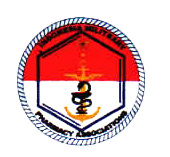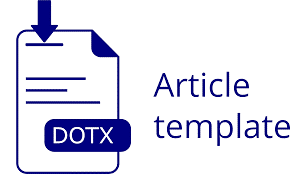Implementation of Military Incident Management System in Disaster Management in Indonesia
(1) Manajemen Bencana, Universitas Pertahanan
(2) Disaster Management, National Security Faculty, Indonesia Defense University
(3) Disaster Management, National Security Faculty, Indonesia Defense University
(4) TNI AD Supply and Transportation Unit, Indonesia
(*) Corresponding Author
Abstract
Indonesia’s success in disaster management cannot be separated from the military’s role. The military plays a strategic role by mobilizing military resources on a massive scale through the military command system. However, the ability of Indonesian Army (TNI AD) soldiers and organizations, in general, is considered to have limited capabilities specifically for personnel handling natural disasters. This research aims to map the disaster management implemented by the Indonesian Army in disaster response through the Incident Management System. Data collection was conducted interactively through qualitative methods with in-depth interviews with the Indonesian Army’s Supply and Transportation Unit (Pusbekangad). The research results show that the Indonesian Army (TNI AD) has competent resources in disaster response, involving the Indonesian Army’s Supply and Transportation Unit, which has primary skills and capabilities in logistics and transportation. These capabilities are facilitated by the Incident Management System, which is structured, systematic, and well-organized. The Incident Management System built by the Indonesian Army involves an incident commander, operation section, planning section, logistics section, finance/administration section, driver section, and the cooking team as a trained, capable, experienced, and ready-to-deploy ad-hoc organization in all operational areas. Indonesian Army uses the Incident Management System to respond to disasters such as earthquakes in Cianjur, South Kalimantan floods, and West Sulawesi floods. The Incident Management System serves
Keywords
Full Text:
PDFReferences
Aeni, P., & Anwar, M. K. (2024). Hydrometeorological Disaster: Challenges and Mitigation in Indonesia. Jurnal Indonesia Sosial Teknologi, 5(1), 318–330. https://doi.org/10.59141/jist.v5i01.888
Agung, D. (2019). Bencana Alam, Militer dan Pertahanan Negara. Jurnal Wira, 3(3), 67. https://www.kemhan.go.id/wp-content/uploads/2019/12/wiraindomeijuni2019komplit.pdf
Annelli, J. F. (2006). The National Incident Management System: A Multi-Agency Approach to Emergency Response in the United States of America. Revue Scientifique et Technique de l’OIE, 25(1), 223–231. https://doi.org/10.20506/rst.25.1.1656
Ayuningtyas, D., Windiarti, S., Hadi, M. S., Fasrini, U. U., & Barinda, S. (2021). Disaster Preparedness and Mitigation in Indonesia: A Narrative Review. Iranian Journal of Public Health, 50(8), 1536–1546. https://doi.org/10.18502/ijph.v50i8.6799
Beach, M. (2010). Disaster Preparedness and Management (C. C. Burns (ed.)). Davis Company. https://doi.org/http://dx.doi.org/10.1144/SP441.11
Cummins, P. R. (2017). Geohazards in Indonesia: Earth Science for disaster Risk Reduction Introduction. Geological Society, London, Special Publications, 441(1), 1–7. https://doi.org/10.1144/SP441.11
Denzin, N. K., & Lincoln, Y. S. (1994). Handbook of Qualitative Research (S. Z. Qudsy (ed.); 1st ed.). London: SAGE Publication. https://irigasi.info/wp-content/uploads/2021/03/handbook-of-qualitative-research.pdf
Djalante, R., Garschagen, M., Thomalla, F., & Shaw, R. (2017). Disaster Risk Reduction in Indonesia: Progress, Challenges, and Issues (Riyanti (ed.); 1st ed.). Springer International Publishing. https://doi.org/10.1007/978-3-319-54466-3
Etkin, D. (2016). Disaster Models. In Disaster Theory (pp. 193–228). Elsevier. https://doi.org/10.1016/b978-0-12-800227-8.00006-5
Etkin, D., Trollope, C., & McBey, K. (2023). The Military and Disaster Management: A Canadian Perspective on the Issue. In Academia (p. 32). https://www.academia.edu/21589758/the_military_and_disaster_management_a_canadian_perspective_on_the_issue
Ibrahim, N., Abdullah, H., & Roslan, N. H. (2018). Relationship between Civil and Military in Disaster Response and Recovery. International Journal of Academic Research in Business and Social Sciences, 8(6), 1216–1223. https://doi.org/10.6007/ijarbss/v8-i6/4318
Lis, A. (2017). The Role of the Military Logistic System in Support of the Civil Crisis Management Operations to Mitigate the Effects of Natural Disasters and Technical Failures: The Case Study of Polish Military Logistics. Journal of Positive Management, 7(3), 47. https://doi.org/10.12775/JPM.2016.015
Malik, A., & Nugroho, A. D. (2016). Menuju Paradigma Penelitian Sosiologi yang Integratif. Jurnal Sosiologi Reflektif, 10(2), 65–84. https://doi.org/10.14421/jsr.v10i2.515
McLean, C. R., Lee, Y. T., & Hutchings, C. (2011). Modeling and Simulation of Incident Management for Homeland Security Applications. National Institute of Standards and Technology. https://www.govinfo.gov/content/pkg/govpub-c13-4340870bb2b1d1143428e68d56056875/pdf/govpub-c13-4340870bb2b1d1143428e68d56056875.pdf
Michaud, J., Moss, K., Licina, D., Waldman, R., Kamradt-Scott, A., Bartee, M., Lim, M., Williamson, J., Burkle, F., Polyak, C. S., Thomson, N., Heymann, D. L., & Lillywhite, L. (2019). Militaries and Global Health: Peace, Conflict, and Disaster Response. The Lancet, 393(10168), 276–286. https://doi.org/10.1016/S0140-6736(18)32838-1
Miles, M. B., Huberman, A. M., & Saldana, J. (2014). Qualitative Data Analysis: A Methods Sourcebook (L. Barrett (ed.)). London: SAGE Publications. https://books.google.com/books/about/qualitative_data_analysis.html?id=p0wxbaaaqbaj
Olson, S. (2019). A Military Response to a Warming World: Federalism, Militias, and Catastrophic Disasters. Duke Environmental Law & Policy Forum, 29(2), 301. https://scholarship.law.duke.edu/cgi/viewcontent.cgi?article=1363&context=delpf
Patria, R. N. (2018). Kapasitas Tni AD Dalam Penanggulangan Bencana Alam Studi Kasus: Kapasitas Kodim 0505/Jakarta Timur Dalam Penanggulangan Bencana Banjir. Jurnal Pertahanan & Bela Negara, 3(1), 157–182. https://doi.org/10.33172/jpbh.v3i1.380
Raj, A. (2008). Armed Forces in Disaster Response: Role Reappraisal. CLAWS Journal, 2, 163–182. https://archive.claws.in/images/journals_doc/598652181_alokraj.pdf
Simm, G. (2019). Disaster Militarism? Military Humanitarian Assistance and Disaster Relief. Max Planck Yearbook of United Nations Law Online, 22(1), 347–375. https://brill.com/downloadpdf/view/journals/mpyo/22/1/article-p347_14.pdf
Singh, J. V. (2012). Military Operation Other Than War (MOOTW). Air Power Journal, 7(3), 125–152. https://capsindia.org/wp-content/uploads/2022/09/jv-singh-1.pdf
Subagyo, A., & Rusfiana, Y. (2018). Sinergi TNI Angkatan Darat dengan Pemerintah Daerah dalam Penanggulangan Bencana Alam. TRANSFORMASI: Jurnal Manajemen Pemerintahan, 10(2), 131–141. https://doi.org/10.33701/jt.v10i2.525
Wende, A., Mahroza, J., Hadisancoko, R. E., & Aremu, S. O. (2023). Role of the Armed Forces in Military Operations Other Than War in Managing Natural Disasters. International Journal Of Humanities Education and Social Sciences (IJHESS), 2(5). https://doi.org/10.55227/ijhess.v2i5.402
Wu, X., Ramesh, M., & Howlett, M. (2018). Policy Capacity: Conceptual Framework and Essential Components. In Policy Capacity and Governance (pp. 1–25). Springer International Publishing. https://doi.org/10.1007/978-3-319-54675-9_1
Zaw, T. N., & Lim, S. (2017). The Military’s Role in Disaster Management and Response During The 2015 Myanmar Floods: A Social Network Approach. International Journal of Disaster Risk Reduction, 25, 1–21. https://doi.org/10.1016/j.ijdrr.2017.06.023
DOI: https://doi.org/10.33172/jp.v10i2.19515
INDEXED BY:
Office Address:
Lembaga Penelitian dan Pengabdian Kepada Masyarakat
Republic of Indonesia Defense University
Jl. Salemba Raya No.14, Paseban,Jakarta Pusat, Daerah Khusus Ibukota Jakarta 10440, Indonesia
Email: jurnal.unhan@idu.ac.id

Jurnal Pertahanan: Media Informasi tentang Kajian dan Strategi Pertahanan yang Mengedepankan Identity, Nasionalism dan Integrity is licensed under a Creative Commons Attribution-NonCommercial 4.0 International License.




